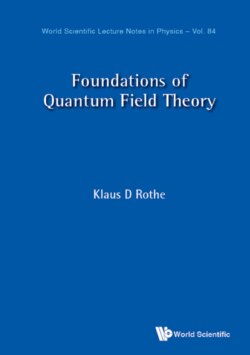Читать книгу Foundations of Quantum Field Theory - Klaus D Rothe - Страница 36
На сайте Литреса книга снята с продажи.
Chirality
ОглавлениеAs the last argument above shows, the m = 0 case has to be treated separately, and cannot be obtained as the zero-mass limit of massive case discussed so far, which was based on the existence of a rest frame of the particle. According to our discussion in the chapter on Lorentz transformations, zero-mass 1-particle states indeed transform quite differently from the massive ones.
In the zero mass case, the Dirac equations for the U and V spinors reduce to one and the same equation:
Let us define the “spin” operator
In terms of the Gamma matrices (Dirac or Weyl basis) this operator reads
The Dirac equation may then be written in the form
where . Thus is just the helicity operator in the 4-component representation.
The helicity operator (4.56) commutes with the free Dirac Hamiltonian. The same applies to γ5, if the mass of the particle is zero. Since furthermore
we may classify the eigenstates of the zero-mass Dirac Hamiltonian according to their helicity and chirality, the latter being defined as the corresponding eigenvalue ±1 of γ5. Such states are obtained from the solutions U to the Dirac equation with the aid of the projection operator
We have
where
Recalling that in the Weyl representation
we have
The eigenvalue of γ5 thus coincides with twice the eigenvalue of the helicity operator: particles of positive (negative) chirality, carry helicity +1/2(−1/2).
